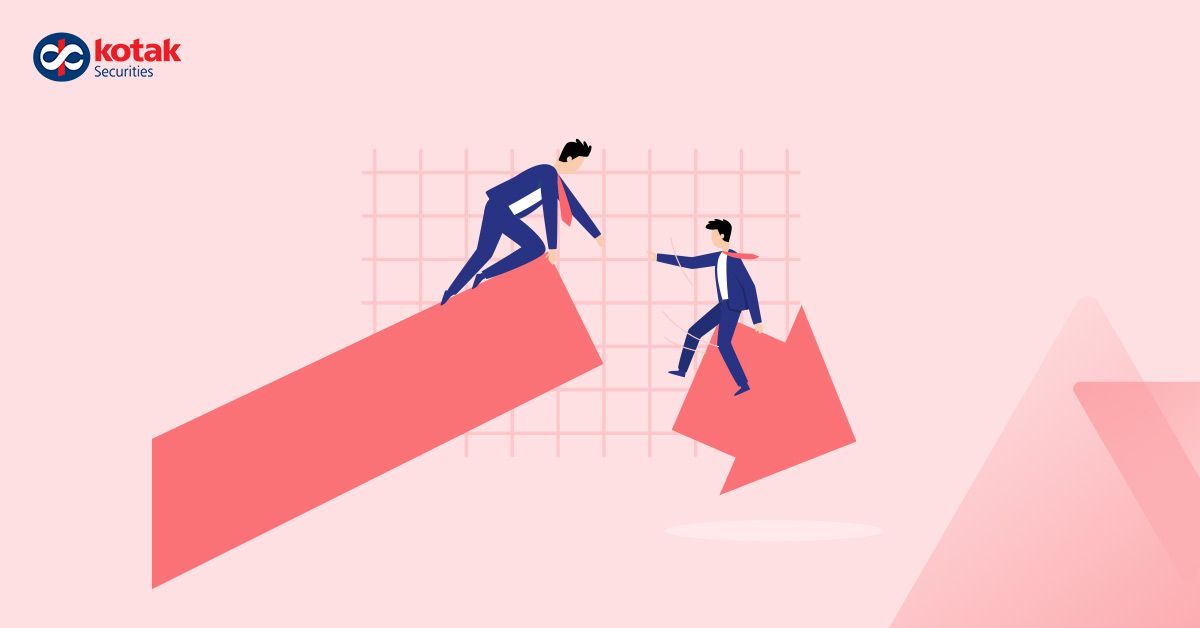What is Gap Up and Gap Down in Stock Market Trading?
Key Highlights:
- Gap up is when a stock’s opening price is higher than the previous day’s closing price; gap down is when it’s lower than the last day’s closing price.
- Gap up signals:
- Bullish sentiment - Indicates strong buying interest.
- Growth potential - Indicates potential growth opportunity.
- Gap down signals:
- Bearish sentiment - Suggests loss of confidence among investors.
- Market uncertainty - Indicates broader market uncertainty.
If you are into stock market investment, you must have often heard two terms - gap and gap down. These two terms describe a situation when a stock's opening price is higher or lower than the previous day's closing price. Gap refers to the difference in price levels between a day's close and the next day's opening.
What is Gap Up and Gap Down?
Let's understand the meanings of gap up and gap down with an example. Suppose a stock's closing price on Monday is Rs 200. When markets open on Tuesday, its opening price is Rs 220. Gap up refers to this situation. On the other hand, if the stock's opening price on Tuesday is Rs 190, it refers to a gap down.
Gap up and gap down are essential as they indicate the market's sentiment towards a particular stock. Gap up and gap downs can be complete or partial (see table below):
Full Gap Up
It happens when a stock’s opening price exceeds the previous day's.
Full Gap Down
It occurs when a stock’s opening price is lower than the previous day.
Partial Gap Up
It happens when the opening price is higher than the previous day's close price but not higher than the last day's high price.
Partial Gap Down
It happens when the opening price is lower than the previous day's close price but not lower than the previous day's low price.
| Full Gap Up | Full Gap Down | Partial Gap Up | Partial Gap Down |
|---|---|---|---|
| It happens when a stock’s opening price exceeds the previous day's. | It occurs when a stock’s opening price is lower than the previous day. | It happens when the opening price is higher than the previous day's close price but not higher than the last day's high price. | It happens when the opening price is lower than the previous day's close price but not lower than the previous day's low price. |
What Does Gap Up Signal?
A gap up signals:
- Bullish sentiment
A stock's gap indicates bullish sentiment. It indicates increased buying interest from buyers. When you see a gap up in a stock, it means investors are confident and optimistic about a company's prospects. It attracts more buyers and can further appreciate a stock's price.
- Potential for growth
A gap up can signal potential growth opportunities. You can capitalise on a stock's growth momentum and profit from the price increase. That said, it's essential for you to analyse the sustainability of the uptrend thoroughly.
What Does Gap Down Signal?
A gap down signals:
- Bearish sentiments
A stock's gap down can signal bearish sentiments among investors. It may suggest a loss of confidence in the company among investors. It can be because of several reasons, such as poor earnings, legal troubles, or any internal issues with the company.
- Market uncertainty
A gap down can also indicate broader market uncertainty. Several factors, including domestic and geopolitical events and economic indicators, can impact stocks, resulting in a gap down.
In Conclusion
Gap up and gap down are essential components of technical analysis and are an essential input for trading. However, you need to use them with other technical indicators such as volumes, moving average convergence divergence (MACD), and moving averages to identify trends and make an investment decision.
Frequently Asked Questions
How Would I Know If the Market Will Open a Gap Up or Gap Down?
If the underlying sentiment is positive, chances are for a gap up. If not, chances are of a gap down.
Do Down Gaps Get Filled?
It may or may not. Once a stock's price records a fall, filling the gap becomes difficult.
What Happens After a Gap Up?
There could be increased profit-taking, and the stock's demand can dry up.
What Causes a Stock's Gap Up or Down?
A gap up can occur due to positive market sentiment and robust company profits. On the other hand, a gap down can happen due to economic indicators, poor company performance, geopolitical events, etc.
Disclaimer: This article is for informational purposes only and does not constitute financial advice. Investors should conduct their own research and consult with financial professionals before making any investment decisions.

